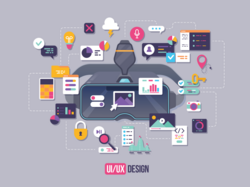ATD Blog
Using Design Thinking to Create L&D Programs That Meet the Needs of Workplace Learners
Wed Dec 11 2019

The past few years have seen explosive growth in the learning and development market, which is now valued at $240 billion. In fact, employers are now spending an average of $1,200/year on employee training and development—up 7 percent from last year. Industry analyst Josh Bersin refers to this as the “golden days of learning.”
Despite significant investment on the part of employers, only 14 percent of employees would give their organization an “A” grade for their learning programs, and only 45 percent of employees say that training programs are relevant to their day-to-day jobs. Almost 75 percent of senior managers and leaders polled by CEB (now Gartner) also state that they’re dissatisfied with the performance of their L&D department.
So, what’s driving the disconnect between employer investment and employee satisfaction with learning and development programs? One answer is learning program design.
Understanding What Learners Are Seeking
Looking at where organizations struggle with learning and development, Harvard Business Review found that it centered around three key issues:
Employees aren’t learning in the moment of need.
They aren’t learning job-relevant skills.
Because the skills they are learning aren’t being used, they’re being forgotten.
LinkedIn’s 2018 Workplace Learning Report backs up HBR’s findings, noting that most employees prefer to learn at work, at their own pace, and at the point of need.
How can L&D professionals start designing programs that meet the needs of workplace learners?
Leveraging Design Thinking to Help Improve Learning Program Efficacy
Design thinking is a method of “creative problem solving” developed at Stanford University. It’s all about deeply understanding your audience so that you can develop solutions that truly meet their needs. This process can help L&D professionals make the most out of corporate investment in learning by designing programs that are more impactful and relevant to workplace learners.
There are five main steps to the process of Design Thinking:
Empathize > Define > Ideate > Prototype > Test
1. Empathize
The first step of design thinking is to understand the problem from the perspective of the end user. Tools that L&D professionals can use to put themselves in the shoes of learners include personas, empathy maps, focus groups, and interviews.
Example: Mona is a learning specialist at XYZ Solutions, a global finance company. She’s been tasked with solving the problem of low adoption for the company’s online training program by their remote staff. After conducting interviews and focus groups, Mona discovers that remote employees find the current training programs boring and don’t like passively watching a series of videos. The remote staff feel they’re missing out on the social aspects of classroom-based learning that HQ employees enjoy. They feel isolated from their teams and believe they are passed over for projects and promotions because they don’t have the same networking opportunities as HQ staff do.
2. Define
The next step is to frame the problem discovered during the empathy phase as a design challenge that we can then work toward solving.
Example: Based on her research, Mona reframes the issue as a question: “How can we create learning and development opportunities for remote employees that allow them to network, build connections, and learn from their peers?”
3. Ideate
Here, L&D professionals can use workshops, whiteboarding, and mind mapping to begin identifying possible solutions to the design challenge posed in the previous phase.
Example: Mona arranges a brainstorming session that includes a broad variety of stakeholders, including L&D professionals, managers of remote employees, and remote employees themselves. During discussions, stakeholders begin to suggest solutions to the design challenge.
4. Prototype
A prototype is a preliminary version of one of the solutions identified in the ideate phase. Prototyping enables L&D professionals to quickly test out new approaches without significant resource or time investments.
Example: Mona takes one of the online courses and storyboards it using a new social learning approach. She shares the storyboard with stakeholders for feedback. After she receives their input on it, she builds out one of the modules, which includes video coaching and a Social Assessment™ that enables peer-to-peer and manager feedback.
5. Test
This phase is all about testing out the solutions identified with end users, gathering feedback, and adjusting as necessary.
Example: Mona tests her new module with remote employees. She includes a survey at the end to get thoughts from learners about the module and also uses a modern learning platform to gather data on how they are interacting with the content. Leveraging user feedback and platform metrics, Mona adjusts the module and releases the next one. This process continues as Mona iterates and improves her company’s online course offerings to better address the needs of remote staff.
Incorporating Design Thinking Into Your Learning Strategy
When applied in a learning context, design thinking can be a valuable tool in helping you understand workplace learners and design engaging, meaningful, and lasting learning experiences. Bringing all stakeholders together and enabling them to work collaboratively means learning programs can not only meet the needs of learners, but also can align with larger organizational goals and deliver better returns on investment from L&D spending.




